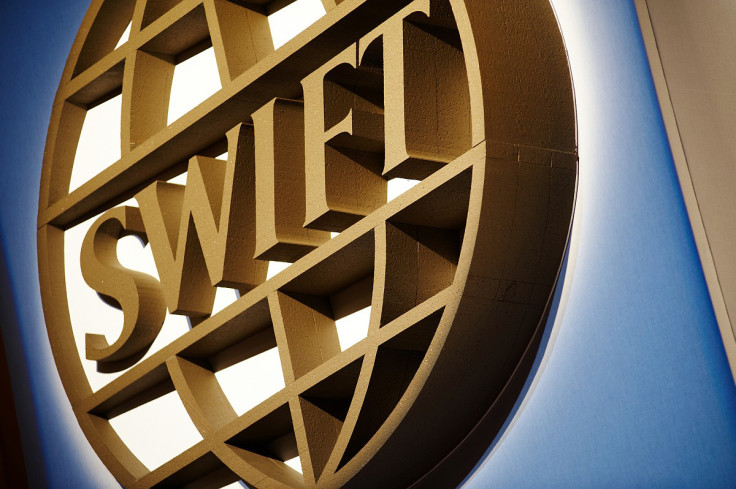Swift enhances correspondent banking with a view to 'blockchain roadmap'

Swift, the communications platform that connects thousands of banks, has improved the correspondent banking arena with faster and more transparent cross border payments – part of a possible roadmap to integrate with new technologies such as blockchains.
Swift said the initiative, which delivers same day use of funds, end-to-end payments tracking and transfer of rich data on payments, will be implemented early in 2016, which in terms of banking equals "the speed of light".
Wim Raymaekers, global head of banking markets at Swift, said the new global payments initiative was phase one of a process, which could eventually "look at changing correspondent banking settlements and maybe having blockchain technology rather than bilateral correspondent accounts."
He said achieving nostro/vostro settlement between cross-border accounts involves a messaging layer and settlement layer. "You can improve it over time when needed. That's the strategic roadmap. But you cannot just unplug it and put something else in there just like that. That's not realistic. Banks have built that into their systems for compliance, you have to maintain that level of control," Raymaekers said.
What is a private blockchain?
A blockchain is a shared ledger of transactions and data entries, a copy of which is held by everyone on a given network. As it is updated and verified by the network, data is time-stamped into blocks. The shared data becomes a link in an encrypted chain and is both tamper-proof and completely auditable.
Private or gated use cases for blockchains, popular with banks at the moment, will not operate in a trustless environment, as is the case with public blockchains like Bitcoin. A private consortium of banks or other financial entities operating blockchains will sign legal agreements in order to validate transactions.
Such use cases can putatively deliver efficiency and cost savings to financial systems, such as reducing the clearing time of securities trading from three days to near instantaneous.
Ripple
Swift has been kicking the tyres of various blockchain technologies in its labs and has also explored specific challenges facing new technology via its Innotribe fintech stable. Distributed ledger technology provider Ripple, for instance, is focused on simplifying correspondent banking. It was recently added to the Microsoft Azure Blockchain-as-a-Service offering.
Ripple offers an Interledger Protocol, a top-layer cryptographic escrow system that allows funds to move between ledgers with the help of intermediaries it calls connectors. Many banks like the look of the technology, including some big players such as Santander. Ripple has also experienced a brush with regulators in the US over anti-money laundering (AML) issues, and has ruggedised its systems and controls accordingly.
Regarding Ripple, Raymaekers said: "You still need business rules on top of that and you still need the payment information anyway. That's not in a distributed ledger technology, at least not today."
He pointed out payments need to say who will be credited and when, if there are fees attached, and so on. He said this is personal, private information, which must remain confidential – another problem for blockchains.
Securities settlements, legacy systems
Swift said a more compelling use case for blockchains may be securities, specifically shortening the time taken to settle trades from three days to zero. But delivering the complex netting of securities settlements in an investment bank on to a blockchain is going to be tricky. It will require the integration of two very different paradigms, one premised on transparency with another that is closed, mathematical and functional.
Moreover, some banks have much sleeker technology backbones than others. The likes of UBS and Goldman Sachs, which perhaps have less in the way of legacy problems, are unsurprisingly the most vocal about blockchain potential.
Correspondent banking, by comparison, is a relatively straightforward proposition for shared ledgers. Many people believe another problem that could be addressed by blockchains is the burden of compliance. The compliance costs of maintaining correspondent banking relationships in some parts of the world outweighs the benefits. This typically affects places where financial inclusion is an issue. There has been a tide of "de-risking" where banks close correspondent accounts in certain countries.
KYC coding
Everyday KYC/AML checking will be automated by blockchain systems, say computer scientists. Regarding AML checks across borders, Dr Gideon Greenspan of Multichain, explained: "I think the answer is that each blockchain address would be tagged with its country, at the time that it's given permission to transact. Then different logic would be applied by the blockchain for transactions between countries, with perhaps an extra piece of approval required, etc."
Raymaekers said identity challenges are being addressed as blockchains move into a more managed environment. He said: "It's a great technology but you still must know who you are transacting with. So there must be identity, there must be some kind of organisation around this."
Swift encourages KYC directories to deal with the millions of KYC documents flying around. Some 7,000 banks on the network with about a million correspondent relationships require transaction filtering and checking.
Raymaekers said: "You may have an open technology framework but if those control mechanisms are not there, banks will not adopt that because they can't. That's why we have relationship management features in the Swift network that allow me to say, 'I want to receive payment from X, but I don't want to receive payments from Y'.
"Technology doesn't necessarily change business behaviour. Technical measures alone are not enough. We need those business rules."
© Copyright IBTimes 2025. All rights reserved.






















